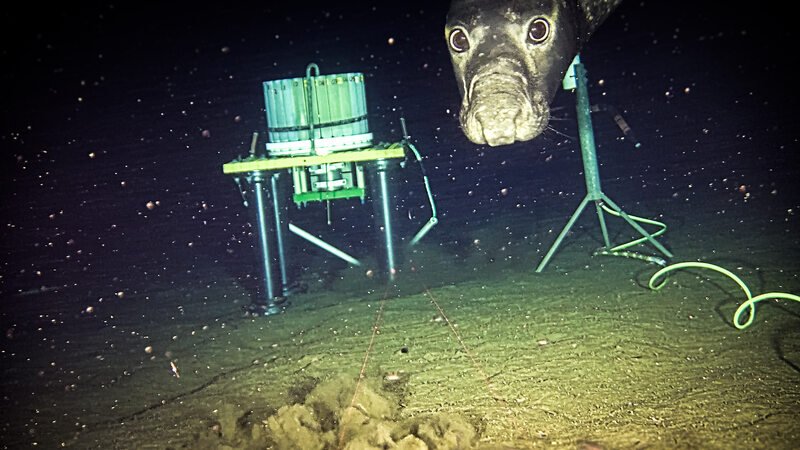Case Study: Ocean Networks Canada Captures Northern Elephant Seal Behaviours
Ocean Networks Canada (ONC) researchers have published unexpected insights into the behaviors of northern elephant seals, captured with camera technology from SubC Imaging.
Published in the peer-reviewed journal PLOS ONE, the study provides a glimpse into the underwater world of northern elephant seals at Barkley Canyon, located off the coast of British Columbia. The research team initially aimed to study the effects of light and sound on fish and invertebrate behavior. However, the surprising capture of elephant seals on SubC’s high-definition cameras provided new information about these marine creatures’ feeding strategies, communication methods, and social behaviors.
Research Environment & Camera Technology
The young male adolescent seals were observed on camera and detected by hydrophones, a first-ever glimpse into the elusive animals deep-sea behaviours. CREDIT: Ocean Networks Canada.
The research was conducted at ONC’s NEPTUNE observatory, an advanced subsea facility equipped with various sensors, cameras, and acoustic monitoring systems, including select cameras from SubC Imaging. This observatory’s real-time data collection capabilities allow scientists to observe marine life in its natural habitat with enhanced accuracy and detail, including studies on marine interactions with whale bones.
Central to this research is high-resolution subsea camera technology, specifically designed for extreme underwater conditions. These cameras can capture clear, detailed footage providing scientists with invaluable data on marine life.
Key Findings
The SubC Imaging cameras recorded at least eight male elephant seals, aged four to seven, who frequented the research site throughout the study. The seals exhibited unexpected behaviors, including a phenomenon dubbed the “dinner bell” effect. Researchers observed that the seals learned to associate the sonar sounds emitted by ONC’s instruments with the presence of food, particularly targeting sablefish, their preferred prey.
An adolescent northern elephant seal forages for food near an Ocean Networks Canada research instrument connected to the NEPTUNE subsea observatory at Barkley Canyon. CREDIT: Ocean Networks Canada
The footage collected reveals behaviors that have previously eluded researchers. The seals actively pursued prey while ignoring other food options, showcasing their ability to adapt their hunting techniques based on environmental cues. Additionally, researchers documented a previously unrecorded behavior: seals resting on the seafloor. This insight adds depth to our understanding of their energy management strategies and how they navigate the challenges of deep-sea living.
Conclusion
These findings contribute to marine conservation efforts by offering data essential for developing effective strategies to protect northern elephant seals and their habitats. The use of real-time monitoring and advanced imaging technologies, such as SubC’s high-resolution subsea cameras, opens new pathways for understanding and preserving marine ecosystems. As scientists continue to explore the ocean’s complexities, technologies like SubC’s play a critical role in uncovering new insights that support sustainable ocean management and resource conservation.


